Uptown is back.
Which is nice because for nearly 20 years, the North Side neighborhood bounded by Irving, Foster, Clark and the lake, was missing. Real estate brokers and developers might have had some information on the whereabouts of the edgy urban area known for its gangs, drugs, political activism, stunning architecture and large homeless population, but they weren’t talking.
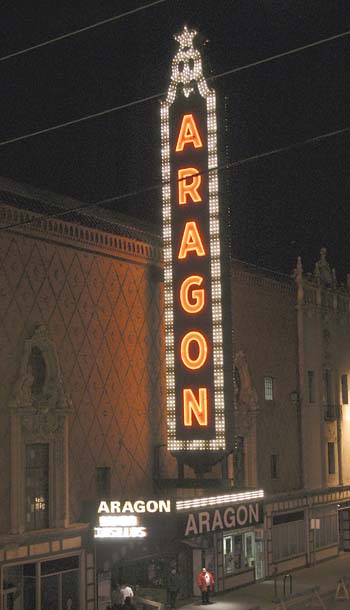 At least not about Uptown. They had plenty to say about Buena Park, Sheridan Park, Margate Park, Clarendon Park, East Ravenswood…But Uptown? Never heard of it.
At least not about Uptown. They had plenty to say about Buena Park, Sheridan Park, Margate Park, Clarendon Park, East Ravenswood…But Uptown? Never heard of it.
The neighborhood’s reputation was bad enough that not even the unique and historic character of
these distinctive enclaves – and all the saccharine marketing at a Realtors’ disposal – could lure many buyers north of Irving Park Road.
How times have changed.
“I’ve sold a lot in Uptown, but we used to shy away from using that name,” says Scott Kruger, the
Koenig & Strey agent who marketed Buena Pointe, a new condominium mid-rise at 4350 N. Broadway. “Now I actually use it. People come to me and say, ‘What do you have in Uptown? I hear that’s the place you’re supposed to buy.'”
David Rowe, executive director of the Uptown Chicago Commission, has noticed the same phenomenon.
“When I moved here years ago, my partner and I bought an apartment building that we advertised as ‘lovely Victorian apartment in Sheridan Park,'” Rowe says. “When people called for the address, 60 percent of them hung up immediately. But in the last three years, they find out what the address is, and they’re fine. There’s been a big change in perception.”
And in reality.
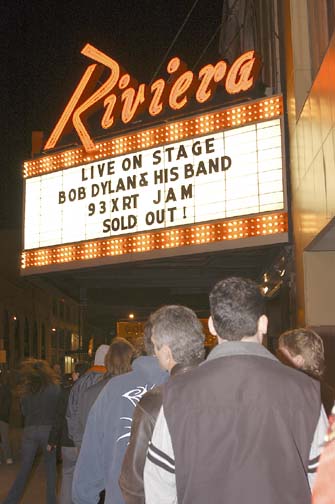 The price of the median condo in Uptown rose to $230,000 during 2003, an increase of more than 80 percent over the $127,000 median recorded just five years earlier, according to the Chicago Association of Realtors. Uptown has long been host to vintage condominium conversions, but lately, new construction mid-rises like Buena Pointe and Par Venu, 4700 N. Sheridan, with a look and prices much closer to those in Lakeview, also have begun popping up.
The price of the median condo in Uptown rose to $230,000 during 2003, an increase of more than 80 percent over the $127,000 median recorded just five years earlier, according to the Chicago Association of Realtors. Uptown has long been host to vintage condominium conversions, but lately, new construction mid-rises like Buena Pointe and Par Venu, 4700 N. Sheridan, with a look and prices much closer to those in Lakeview, also have begun popping up.
There is a feeling among residents of all political inclinations that Uptown has reached a critical juncture. An endless stream of condo conversions has built up a large number of homeowners with comparatively high incomes who are active in the neighborhood. A strong economy and a hot real estate market during the last decade made buyers and developers more willing to take risks on the area, and development has reached a new pitch.
Several major new projects not only will total hundreds of housing units, but they’ll also have sizable retail components, including the likes of Target, Borders Books & Music, a movie theater with 14 to 16 screens and many smaller stores. That’s an indicator for some that Uptown, which in the parlance of real estate has been “up-and-coming” for 20 years, finally has arrived.
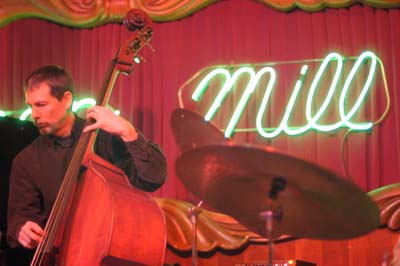 Commercial development is a strong sign in the neighborhood for several reasons. For starters, it usually lags significantly behind residential development. An influx of new retail indicates that Uptown’s residential base has gotten strong enough to support it (or that the perception finally has caught up with the reality).
Commercial development is a strong sign in the neighborhood for several reasons. For starters, it usually lags significantly behind residential development. An influx of new retail indicates that Uptown’s residential base has gotten strong enough to support it (or that the perception finally has caught up with the reality).
New commercial development is important for current residents because Uptown is notoriously underserved by retail, with many of its commercial strips dilapidated and under-occupied. The opportunity for shopping, however, is secondary to the opportunity for jobs in the new stores for much of the neighborhood’s large low-income population.
New and planned developments such as Uptown Square, Rainbo Village and the Wilson Yard will have an even greater impact on the neighborhood than their size might suggest, developers say, because they sit in such strategic locations and in some cases, are part of tax-increment financing districts designed to spur redevelopment. And retailers as big as Borders and Target (reported to be the lead store at Wilson Yard, though the company has not said so) have enough cachet to attract more stores eager to piggyback on their traffic.
The transformations underway are big enough that some neighborhood activists are worried about possible negative effects on current retailers, who could be priced or pressured out of redeveloping commercial strips. Apartment tenants who currently struggle to make rent from month to month also are worried about the potential for an upward spike in housing prices.
These and other concerns have been aired at countless community meetings in a political process that seems exceptionally open in Uptown, thanks in part to activist Ald. Helen Shiller (46th). The lines are often clearly drawn in the neighborhood, usually between those afraid of gentrification and those hoping for it. Reaching anything like a consensus might be impossible, but the new developments do represent some measure of compromise.
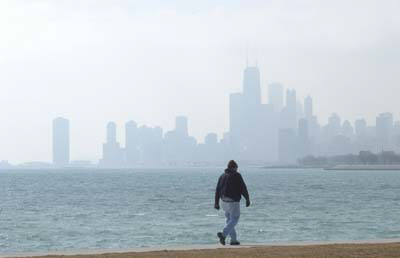 The demand by some local constituencies for new retail is being met, though it might not always be of the scale or type they would like. Others’ demands for affordable housing also are being addressed, though this component of the new projects might not be as large or as affordable as they would like.
The demand by some local constituencies for new retail is being met, though it might not always be of the scale or type they would like. Others’ demands for affordable housing also are being addressed, though this component of the new projects might not be as large or as affordable as they would like.
Key parcels developed
At press time, only two units remained for sale at the Phoenix at Uptown Square, and the project’s lead retail tenant, Borders Books & Music, was scheduled to open in mid-April. The development mixes new construction with a thorough renovation of a former Goldblatt’s store, a mainstay of the neighborhood until it closed in the mid-’90s.
The two-story Borders will occupy 25,000 of the project’s 41,000 square feet of retail space. T-Mobile already has moved in and several other tenants are close to signing leases, according to Dennis Harder, vice president of development services for Joseph Freed Homes, the developer.
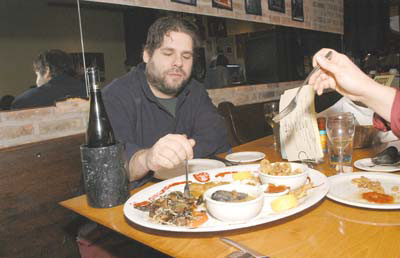 The development sits at the extra-wide intersection of Lawrence and Broadway, a one-time center of commerce in Uptown that became rundown over the years. But with the architecturally interesting Uptown Bank building now hosting a Starbucks, and a Borders and other retailers opening in Uptown Square, the prominent spot already is having an effect on Broadway, Harder says.
The development sits at the extra-wide intersection of Lawrence and Broadway, a one-time center of commerce in Uptown that became rundown over the years. But with the architecturally interesting Uptown Bank building now hosting a Starbucks, and a Borders and other retailers opening in Uptown Square, the prominent spot already is having an effect on Broadway, Harder says.
“It is kind of a focus of the community, and Goldblatt’s, which existed through the ’90s, had always enjoyed a prime spot. It was very visible,” Harder says. “Then it was abandoned for five or six years and became decrepit. We talked with lots of people, including the alderman, residents and community groups about what we saw as an opportunity to redevelop those buildings and bring back some life and new retail to those intersections, which would be a catalyst well beyond the boundaries of property.”
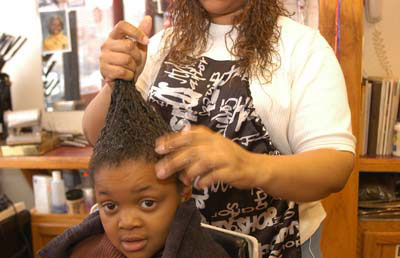 At Uptown Square, 20 residential buyers have moved in and only two units are available, a one-bedroom priced in the $250s and a corner two-bedroom priced in the $390s. The project already is starting to have the expected effect, according to Harder. A building across the street recently was sold and he hopes, will be improved, and the former Heilig-Meyers Co. furniture store a block north, at 4840 N. Broadway, is being converted into loft condominiums.
At Uptown Square, 20 residential buyers have moved in and only two units are available, a one-bedroom priced in the $250s and a corner two-bedroom priced in the $390s. The project already is starting to have the expected effect, according to Harder. A building across the street recently was sold and he hopes, will be improved, and the former Heilig-Meyers Co. furniture store a block north, at 4840 N. Broadway, is being converted into loft condominiums.
Finnegan Development will include 22 units at Gunnison Street Lofts with the nine remaining units priced from about the $300s to the $440s, and 15,000 square feet of retail on the ground floor. Like the Phoenix at Uptown Square, the Gunnison lofts will have an affordable housing component – five units available to families earning 60 to 80 percent of the metropolitan area’s median income. At the Phoenix project, eight of the units were affordable, though some neighborhood activists complain that prices in the $150s are still out of reach for many of Uptown’s low-income residents.
The debate over affordable housing has turned into a citywide movement whose goal is to that mandate a percentage of units at all significant new developments be reserved as affordable housing. Mayor Richard Daley has opposed any sort of blanket set-aside in private development, but the city has forced developers receiving city money to provide some affordable units.
In Uptown, where tax-increment financing has been important for projects like Uptown Square, the city has leverage. At the Wilson Yard, where the land was owned by the Chicago Transit Authority, the process has been even more of a public-private process – one reason it’s taken so long to get off the ground.
The five-acre site bounded by Wilson, Montrose, Broadway and Truman College, sits just a couple of blocks south of Freed’s Uptown Square project, though it’s planned on an even bigger scale. The $130 million development will include a 90-unit seniors building, an affordable 90-unit co-op and about 30,000 square feet of retail at the south end of the site, as well as additional retail to the north.
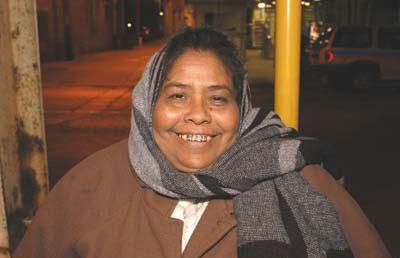 Peter Holsten, of Holsten Real Estate Development Corporation, co-developer of the project, says discussions are underway with a “big box” retailer (which sources identify as Target). Plans are being finalized to build a new Aldi Food Store at the north end of the site, and discussions are underway with a movie theater for a 14- to 16-screen cinema. Holsten says he hopes to start construction on the development by the final quarter of this year.
Peter Holsten, of Holsten Real Estate Development Corporation, co-developer of the project, says discussions are underway with a “big box” retailer (which sources identify as Target). Plans are being finalized to build a new Aldi Food Store at the north end of the site, and discussions are underway with a movie theater for a 14- to 16-screen cinema. Holsten says he hopes to start construction on the development by the final quarter of this year.
Two other major projects, also in key spots, will bring a mix of housing and retail to Uptown. Rainbo Village, 4836 N. Clark, will replace the Rainbo Gardens Building, which over the years served as sports arena, rock venue and most recently, a roller skating rink, with 127 condos and townhouses and 15,000 square feet of retail space.
Metropolitan Development Enterprises already has seen strong interest in the planned homes, according to Bruce Zimmerman, vice president of sales and marketing. The developer plans to open a sales trailer and begin construction on site in June. The homes will be priced from the $190s to the $600s. The development is designed to be open, with a wide central courtyard, landscaping and benches.
Down the street from Rainbo Village, in the 4700 block of North Clark, developers Morrisey & Morrisey recently received permits for a new development of five eight-flats with retail at street level. A corner of the parcel, formerly occupied by Flash Cab Co., has been bought by North Community Bank for a new branch.
After years of rehabbing and vintage condo conversions, development seems to have hit its stride in Uptown, according to Zimmerman.
“This is an area where redevelopment is not just starting to occur, but to occur on a grander scale,” Zimmerman says. “Andersonville is close by, walking distance from Rainbo Village, and everyone knows the name. Close by is Lakewood (Balmoral), which also has gone through transitional periods over last decades. I’m not certain why this hasn’t occurred in Uptown before, but it’s really making a move in the last couple of years.”
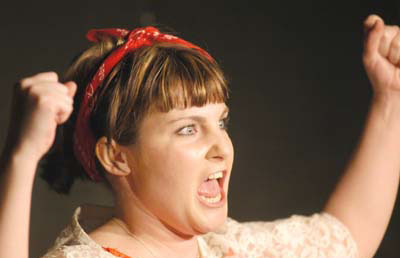 And that’s what frightens some in the community, who worry that Uptown may soon be as homogenous and expensive as Lincoln Park and Lakeview, to the south. The next domino in the row of gentrifying lakefront neighborhoods finally is teetering, they say, and the appearance of giant corporate retailers such as Starbucks and Borders after a wave of increasingly pricey condos may be the push that tips it.
And that’s what frightens some in the community, who worry that Uptown may soon be as homogenous and expensive as Lincoln Park and Lakeview, to the south. The next domino in the row of gentrifying lakefront neighborhoods finally is teetering, they say, and the appearance of giant corporate retailers such as Starbucks and Borders after a wave of increasingly pricey condos may be the push that tips it.
Wealth is nothing new to Uptown. It always has had its share of the well-to-do, evident in the ornate multi-family buildings and historic single-family homes that line many streets. Hutchinson in particular has some of the North Side’s most palatial houses.
But those who have moved to the neighborhood thinking they’ve bought in Lincoln Park North over the years have been sorely disappointed. Uptown’s main streets are gritty and often littered. Drug deals and prostitution are apparent in some spots, and the homeless population is large. Unlike more homogeneous neighborhoods to the south, Uptown is one of the most diverse and colorful in the city, with residents from Bosnia, Somalia, Mexico, Cambodia, Vietnam, Honduras and many other parts of the world.
Some home buyers move to Uptown partly because they like that diversity. Others are purely attracted to affordable vintage condos and discover the neighborhood – with varying degrees of satisfaction – after they’ve moved in.
 “It’s a little different than where we used to be, at Southport and Addison, which is more manicured,” says Susan Spallino, who bought a rehabbed condo with her husband in the 4600 block of North Racine. “It’s starting not to completely change, but to have an influx of new development with more activity and storefronts going up. Seeing Starbucks there says a lot. I’m not really a Starbucks goer, but they do their research.”
“It’s a little different than where we used to be, at Southport and Addison, which is more manicured,” says Susan Spallino, who bought a rehabbed condo with her husband in the 4600 block of North Racine. “It’s starting not to completely change, but to have an influx of new development with more activity and storefronts going up. Seeing Starbucks there says a lot. I’m not really a Starbucks goer, but they do their research.”
Larry Hope still gets coffee at the Starbucks on Wilson, near his work, but he no longer lives in Uptown. He was forced to move when his apartment building converted to condominiums.
“I looked around in Uptown, but it’s going condo every place,” he says. “There are some apartments left, but it’s like $550 for a studio, and that’s one room.”
But Rowe, of the Uptown Chicago Commission, says, “It doesn’t make sense to build more affordable units in Uptown.” The neighborhood already has plenty of affordable housing, he says, and he doesn’t see the boom in condo conversions as shrinking or jeopardizing that stock.”
Another neighborhood group, the Organization of the Northeast (ONE), has a different take.
“I could show you buildings in the neighborhood where families of five and six people are living in studios,” says Sarah Jane Knoy, executive director of ONE. “Their school is here, their church is here and their community, and they don’t want to be forced to move. It’s so easy for us to talk about it in the abstract but this is causing real suffering. And moving isn’t really an option for a lot of people.”
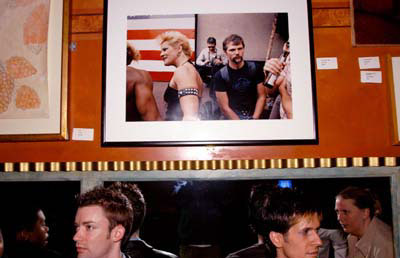 Uptown’s most basic housing, homeless shelters, also are struggling. Residents for Effective Shelter Transitions (REST), a group that operates three shelters in Uptown, including the only year-round shelters in the city between Lakeview and Evanston, had to move part of its permanent housing program to Rogers Park. The group couldn’t find an Uptown building that would accept the federally mandated rents it pays for apartments where it houses the disabled homeless.
Uptown’s most basic housing, homeless shelters, also are struggling. Residents for Effective Shelter Transitions (REST), a group that operates three shelters in Uptown, including the only year-round shelters in the city between Lakeview and Evanston, had to move part of its permanent housing program to Rogers Park. The group couldn’t find an Uptown building that would accept the federally mandated rents it pays for apartments where it houses the disabled homeless.
“We couldn’t find a building in Uptown that would accept the HUD (Department of Housing and Urban Development) rate we’re allowed to pay for our units, which is a pretty strong statement,” says Kathy Ahler, executive director of REST. “When we started (nine) years ago here with federal funding, it was easy. We used to have units in four buildings here, now we’re down to two.”
The Uptown Chicago Commission cites census data to show why Uptown doesn’t need more low-income housing, and ONE cites the same census reports to show why it does. Rowe, of the UCC, focuses on numbers showing that the percentage of renter-occupied housing declined only by about 2 percent in Uptown from 1990 to 2000. Knoy, of ONE, points out that the number of owner-occupied units shot up to 23 percent in 2000, from 14 percent in 1990.
Each group puts its own spin on the numbers, but neither disputes the fact that Uptown currently is an incredibly diverse mixed-income neighborhood, an increasingly rare phenomenon in Chicago, and something Mayor Daley says he supports. But can the neighborhood sustain that diversity in the face of growing development?
The Near North Side, Lincoln Park and Lakeview – other lakefront neighborhoods that suffered massive displacement and skyrocketing real estate prices as they gentrified – aren’t promising examples.
But they also aren’t perfect parallels. A significant number of Uptown’s low-income housing units are locked in place, controlled by nonprofits like Lakefront SRO or the Chicago Housing Authority or tenant-owned co-ops. Ald. Helen Shiller (46th) and groups like ONE are battling to preserve affordable units, and a new development model is emerging in the neighborhood, one that might be an example for the rest of Chicago.
Shiller is asking developers to reserve a portion of their units in new developments, usually around 10 to 20 percent, for affordable housing. In Uptown Square, Freed pledged eight of 37 condos as affordable through the Chicago Partnership for Affordable Neighborhoods program. The affordable units at the Wilson Yard are designed to be within the reach of those earning up to 60 percent of the area’s median income, and Rainbo Village will have an affordable component, though Zimmerman says the specifics have not been decided.
“A lot of the developers we meet with, even without pressure, are intrigued by the idea because they never thought of it,” Knoy says. “Those units are guaranteed to be sold.”
Of course, “affordable” in such developments is a relative term. The units still can cost more than $100,000 and their buyers might be considered well off compared to many Uptown residents. A much more pressing need, according to Knoy, is providing affordable rentals for those on the lower economic rungs.
“The definition of affordable for these programs is more expensive than we’d like – anything that serves people with incomes at 60 to 80 percent of the area’s median income…” Knoy says. “We see an additional, very large need for rental housing that costs under $700 a month for people who work at Jewel, Osco, Walgreen’s. Even if you both work full time in those minimum wage jobs and both pay a third of your income for rent, that’s $500 a month. I challenge you to find that kind of rent anywhere in Chicago.”
Knoy and ONE pressed for the Wilson Yard to include some “very affordable rental property.” Rowe, of the Uptown Chicago Commission, wanted it to be a commercial development, with no new affordable housing.
They can agree, like most everyone these days, on what to call the neighborhood, but in their definitions of Uptown today and visions for tomorrow, they might as well be talking about different countries.
